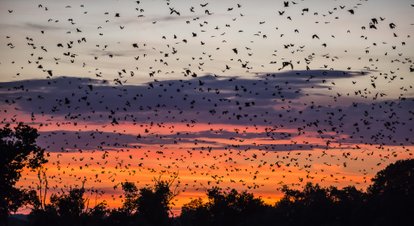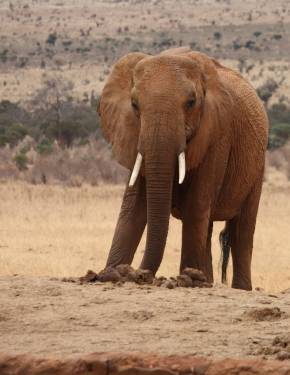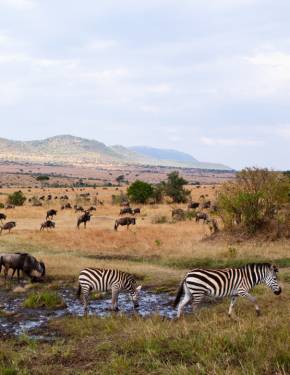Bat Migration in Zambia 2025-2026
Afraid of bats? Imagine witnessing 10 million of them at once
Best time: mid-October–December
Annually, up to 10 million fruit bats migrate to Zambia, with around eight million straw-colored fruit bats arriving from the Congo each year from October to December. They come to feed on the abundant wild Masuku fruits, making this the world's largest known bat migration. These nocturnal mammals thrive in this habitat, drawn by the plentiful food sources available.
Migrating Season
The bats arrive in Zambia in late October and stay until the end of the year, with November marking the peak time to witness this natural phenomenon. Sunsets and sunrises during this period are particularly spectacular. Each evening at twilight, a massive swarm of bats emerges seemingly out of nowhere, swooping onto trees for a wild fruit feast that lasts until dawn. Afterward, they vanish into the night, leaving an eerie morning silence that feels strikingly quiet after the cacophony produced by millions of bats.
Best Viewing Locations
Kazanka National Park
In Zambia, one of the best places to see bats is Kasanka National Park, which hosts one of the largest concentrations of fruit bats in the world. Located in the eastern province, north of the Luangwa Valley, the park can be accessed via a dirt road from Lundazi. From a small hill near the entrance, visitors can enjoy unobstructed views of the tree canopy where the bats roost. Several walking trails allow for close encounters as the bats feed on wild fruit. Guided tours provide insights into their migratory habits. Millions of bats migrate to the park from mid-October to December, creating a spectacular sight at dusk. This period is ideal for witnessing their activities, along with stunning sunrises and sunsets.
Other Spots
Another great location is South Luangwa National Park, where various bat species can be found. Visiting caves in the area, such as the Chipangali Wildlife Orphanage, also offers opportunities to see bats in their natural habitats.
Activities in Zambia
The area is also home to wattled cranes, sacred ibises, spur-winged geese, and swamp flycatchers, along with plentiful elephants, buffalo, reedbuck, and large herds of black lechwe. North Luangwa National Park and South Luangwa National Park are two leading safari destinations in Africa. Located near Kasanka National Park, they offer an excellent opportunity to combine a safari with the unforgettable experience of witnessing the bat migration.
Safety
Fruit bats aren't a significant threat to human safety during their migration. Feeding on wild fruit, pollen, and nectar, the bats are harmless to humans. While walking under the trees, fruit debris may fall on one, necessitating donning a hat or head covering, but the bats themselves are not hazardous to humans.



































































